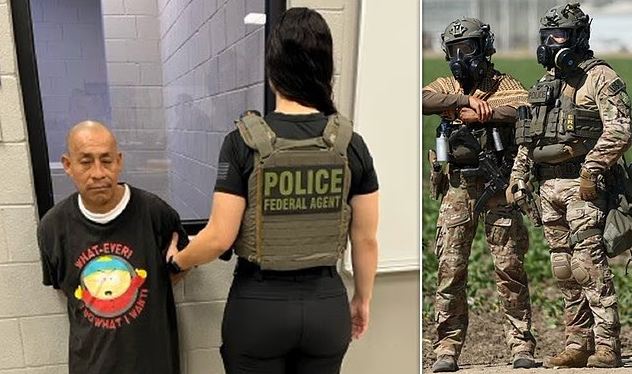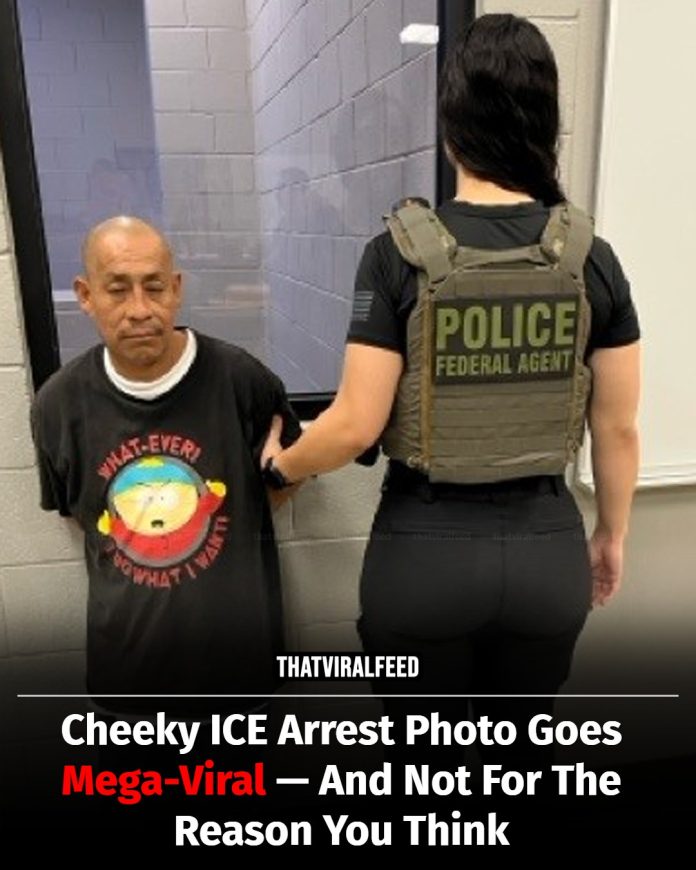A recent arrest photo shared by U.S. Immigration and Customs Enforcement (ICE) has gone viral, not due to the individual arrested, but because of the way the photo was staged. The image, posted by ICE San Diego on August 23, 2025, shows 42-year-old Diego Hernandez, a Mexican national with multiple DUI convictions and a history of illegal re-entry into the U.S., standing beside a female ICE agent. The agent is facing away from the camera, with her hair over her shoulder and wearing tight black pants, which many online users found provocative. The photo has garnered nearly 25 million views on social media platform X (formerly Twitter), with users expressing various reactions.
Public Reaction and Criticism
The composition of the photo has sparked widespread discussion. Some users criticized ICE for allegedly staging the image to gain attention, while others joked about the agent’s appearance. One user commented, “Am I f–king crazy, or is this them trying to humiliate a random immigrant and using an ICE agent’s fat delicious a– just to make sure it gains traction,” highlighting the mixed reactions.

ICE’s Response and Context
ICE has defended the photo’s composition, stating that agents often face away from the camera to protect their identities. However, the stylized nature of this particular image led to accusations of intentional staging. ICE confirmed that Hernandez was arrested in San Diego and is facing deportation due to his criminal history and repeated illegal re-entry into the U.S., citing public safety concerns.
Broader Implications
This incident raises questions about the ethics of using arrest photos for social media engagement. While ICE’s primary mission is law enforcement, the agency’s use of social media to publicize arrests has been scrutinized for potentially sensationalizing serious matters. The viral nature of this photo underscores the power of visual content in shaping public perception and the responsibility of agencies to consider the implications of their media posts.
Social Media and Public Debate
The viral ICE photo has sparked a heated discussion across multiple social media platforms. Users debated whether the image was appropriate or whether it exploited both the agent and the individual being arrested. Some argued that ICE should focus on public safety rather than producing content that could be perceived as sensationalized. Others joked about the agent’s appearance, highlighting how online discourse can quickly shift from serious concerns to humor and memes.
Ethical Considerations
Experts in media ethics have weighed in, suggesting that law enforcement agencies need clear guidelines when posting content online. Arrest photos, while standard for record-keeping, can take on unintended meanings when shared on public platforms. They stress that agencies must balance transparency with sensitivity to both the individuals involved and the public audience.

Moving Forward
The controversy illustrates how quickly social media can amplify small incidents into major public debates. ICE and other agencies may need to reconsider how they present sensitive material online to avoid misinterpretation and backlash, ensuring that their communications remain professional and ethical.
Conclusion
The viral ICE arrest photo has ignited a broader conversation about the intersection of law enforcement practices and social media strategies. While ICE maintains that the photo was standard procedure to protect agent identities, the public’s reaction suggests a growing awareness and sensitivity to how such images are presented and perceived. This incident serves as a reminder of the complexities involved in using visual media to communicate serious matters and the potential consequences of such representations.

















